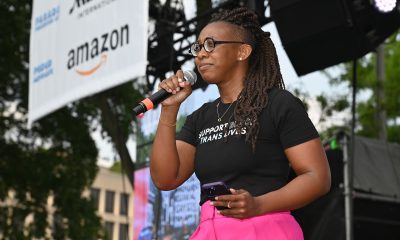a&e features
SPORTS ISSUE 2019: Trans women face many hurdles in quest to compete fairly
Testosterone levels, hormones, evolving policies, anti-trans bias among complicating factors
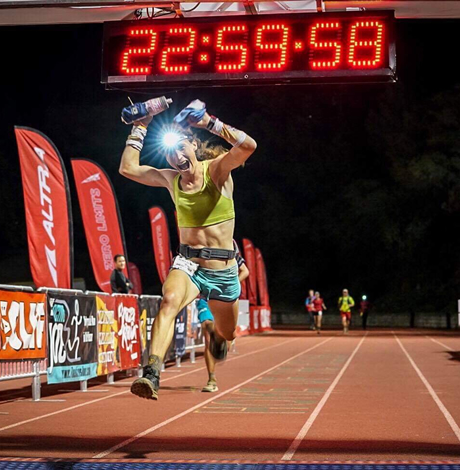
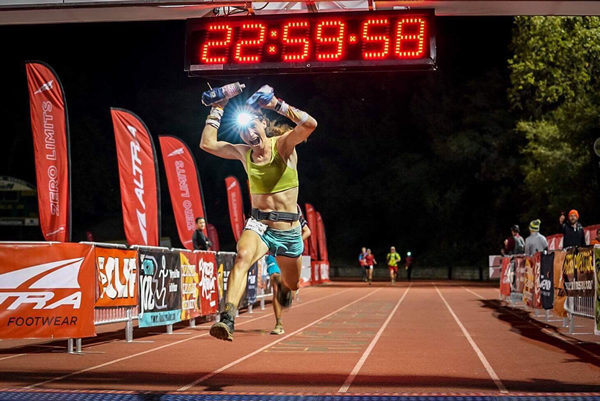
LGBT issues have never been easy — marriage, military service, AIDS, you name it, no gain came without a fight. But if, as is commonly posited, trans rights lag a good 10 or more years behind gay and lesbian advances, perhaps the thorniest issue of all is fair competition for trans women and their cis women opponents, in both recreational and elite sport.
Imagine that women’s sports had never become “a thing” and all adults competed against each other. In figure skating, for example, only three women have landed quad jumps in competition, yet no male singles skater today can be remotely competitive without multiple quads in his arsenal (Nathan Chen landed six at the 2018 Olympics yet failed to medal).
Yes, Billie Jean King (a lesbian) famously beat Bobby Riggs in the 1973 “Battle of the Sexes” in tennis, but she was 29 and he was 55. What would happen if Michael Phelps and Katie Ledecky (swimming) or Novak Djokovic and Serena Williams (tennis) were to face off in the pool or on the court?
Perhaps more realistically, what would happen if Chen, Phelps or Djokovic came out as trans, opted out of hormone replacement therapy and competed as women? Some LGBT advocates say even suggesting such a scenario is transphobic or, at best, displays a gross misunderstanding of the issue. But it’s a question being asked by many.
The International Olympic Committee changed its policy in early 2016 to allow trans women to compete provided they demonstrate their testosterone level has been below a certain level for at least one year prior to their first competition. It supplants the previous 2003 policy that required both gender reassignment surgery and two years of hormone therapy (trans men are allowed to compete without restriction).
Chris Mosier, a trans male athlete and creator of transathlete.com, a resource site for trans sports advocacy at all levels, says the debate has been unfair and overheated.
“We’ve had several Olympic games since the policy has been in place for trans athletes,” says the 38-year-old Mosier, who in 2015 became the first openly trans man to make a Men’s U.S. National Team when he qualified for the Spring Duathlon team. “We’re talking something like 50,000 Olympians have passed through and not a single trans athlete or single trans woman has participated. The fears people have and the stereotypes and misconceptions they’re putting out there about trans women dominating sports just simply haven’t happened.”
That’s also the argument of trans activist/author Brynn Tannehill whose book “Everything You Ever Wanted to Know About Trans” came out in 2018. She points out that there has not been a single trans athlete dominator since the Olympic policy change or since the NCAA changed its policy to allow trans people to compete sans surgery in 2011. She claims a year of testosterone removal is “sufficient to remove competitive advantage.”
But some cis athletes have balked at getting beaten by trans women competitors. And they’re not just complaining — some are taking legal action. Elsewhere, governing bodies in various sports at all levels are either facing or have faced challenges in how to keep their eligibility policies current and trans-inclusive. That collides with the widely held trans argument that what a trans person has done or not done by way of hormone replacement therapy or gender reassignment surgery is a personal matter that doesn’t make them more or less a woman or man than those at other stages of transition.
Others say trans bias is something impossible to ignore or downplay because it’s so rampant.
“There will always be people who will say a trans female athlete is cheating when she wins or when she doesn’t win, say, ‘She just didn’t try hard enough,’” says gay sports filmmaker David McFarland (“Alone in the Game”). “People are looking for a reason to discriminate against trans people in sport, that’s a given.”
Connecticut controversy
Selina Soule, a 16-year-old runner at Glastonbury High School in Glastonbury, Conn., is frustrated. She says she’s suffered because trans competitors in her conference — Terry Miller of Bloomfield High and Andraya Yearwood of Cromwell High — have been allowed to compete no questions asked against she and her fellow cis women runners.
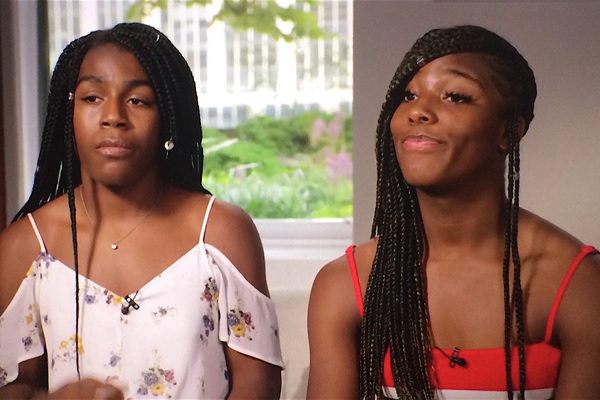
Miller won the State Open 200-meter title for the second straight year in 2019 and won the Class S titles in the 100 and 200, as well as the New England 200-meter championship. Yearwood, who is also transgender, finished third in the 100 meters in Class S and fourth in the 100 in the State Open.
Subsequently Soule wasn’t able to compete in the New England regional Championships where she would have been seen by college scouts. Miller and Yearwood have won 15 women’s state championships since the Connecticut Interscholastic Athletic Conference (CFAC) changed its policy to allow them to compete as women. Conference leaders say they’re simply following state law.
“The CIAC is committed to providing transgender student athletes with equal opportunities to participate in CIAC athletic programs consistent with their gender identity,” its guidebook reads. Connecticut is one of 19 states that has similar laws.
“I am very happy for these athletes and I fully support them for being true to themselves and having the courage to do what they believe in,” Soule said in a Fox News interview. “But in athletics, it’s an entirely different situation. It’s scientifically proven that males are built to be physically stronger than females. It’s unfair to put someone who is biologically a male who has not undergone anything in terms of hormone therapy against cisgender girls.”
Miller and Yearwood have declined to state publicly what, if any, hormone therapy or testosterone suppression — more on that later — they have undergone.
Soule told the Wall Street Journal the experience has been demoralizing.
“It’s just really frustrating and heartbreaking because we all train extremely hard to shave off just fractions of a second off of our time and these athletes can do half the amount of work that we do and it doesn’t matter,” she said. “We have no chance of winning.”
“It’s definitely a complicated issue,” Soule’s mother Bianca, told the Blade in a brief phone interview. “You have to compete based on the physical abilities you were born with, if you want to call it that. That’s why we separate the two genders. If there were no differences, there would never have been a women’s sports. Unfortunately our trans girls are caught in the middle. The rule is the problem. I tried to contact our Connecticut association to try to look into it, even meet with one of the trans girls’ fathers to try to understand and come up with a solution but we were met with only shut doors. The frustrating part has been the refusal of the athletic bodies to even consider and listen to our side of it.”
Yearwood and Miller issued statements through the ACLU. “I will continue to fight for all trans people to compete and participate consistent with (whom) we are,” Miller wrote. “There is a long history of excluding black girls from sport and policing our bodies. I am a runner and I will keep running and keep fighting for my existence, my community and my rights.”
“I will never stop running,” Yearwood wrote. “I hope that the next generation of trans youth doesn’t have to fight the fights that I have. I hope they can be celebrated when they succeed, not demonized.”
“It is heartbreaking to see yet another attack on trans youth for simply participating in activities alongside their peers,” Chase Strangio, ACLU staff attorney added. “Discrimination on the basis of sex extends to trans people. Girls who are transgender are girls.”
A legal group called Alliance Defending Freedom (it calls itself a “conservative Christian nonprofit”) filed a complaint in June with the U.S. Department of Education Office of Civil Rights on behalf of Soule and two of her teammates claiming they have “been negatively impacted by the policy.”
“One of these male athletes now holds 10 records inside the state of Connecticut that were once held by 10 individual girls established over the course of about a 20-year period so it’s fundamentally unfair to allow biological males to step into women’s sports and frankly dominate them and take away opportunities not just to medal, but to be on the podium and advance to the next level of competition and even compete for scholarships for young women like Selena,” Christiana Holcomb, an Alliance Defending Freedom attorney, told Tucker Carlson on Fox News.
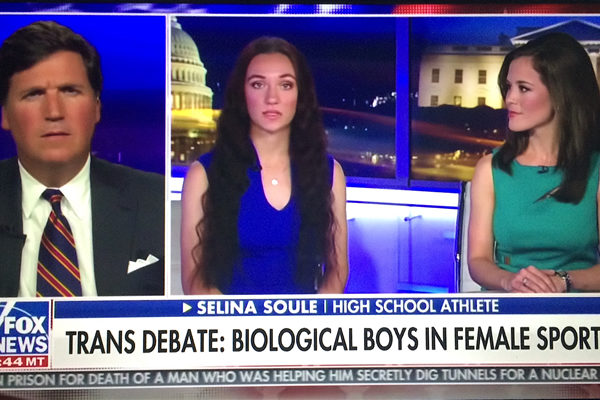
“It’s grotesque and insane and it hurts women and girls,” Carlson said on the broadcast.
The issue is especially acute among high school athletes because students are often just figuring out whom they are, how they identify and are less likely to have time logged living fully transitioned lives.
Dawn Stacey Ennis, managing editor of OutSports and a trans woman, says the trans-girls-bumping-cis-girls-off-the-medal-stand argument is misleading because college coaches recruiting look at time, not placement.
“They don’t care who placed first, second or third — all colleges look at and what every coach has told me is that the time is what matters because time is immutable, you can’t change that. It doesn’t matter if you ran against a trans person or not,” Ennis says.
She also says Soule and her representatives aren’t being totally forthcoming.
“I talked to her mother and watched the video and when she said (Selina) didn’t get to qualify for the event in Boston, she sort of fibbed a little bit. She didn’t qualify in that event, but she did qualify in another event. But, of course, that’s not a good headline. It’s much better to say, ‘I didn’t get to go because of these girls.’ … They have to make the trans girls out to be the boogyemen because somebody else has to be responsible for her losing. It has to be someone else’s fault, but that’s not what sports is about.”
Tennis legend Martina Navratilova, a lesbian, was heavily criticized for a Sunday Times op-ed she wrote in February arguing trans women should not be allowed to compete against cis women.
“It’s insane and it’s cheating,” she wrote. “I am happy to address a transgender woman in whatever form she prefers, but I would not be happy to compete against her. It would not be fair. … To put the argument at its most basic: a man can decide to be female, take hormones if required by whatever sporting organization is concerned, win everything in sight and perhaps earn a small fortune, and then reverse his decision and go back to making babies if he so desires,” she wrote.
She was heavily criticized for her comments, removed from the advisory board of Athlete Ally (an LGBT athlete advocacy group) and called out by trans activists such as cyclist Rachel McKinnon (the first trans woman to win a world track cycling title in Oct., 2018), who called Navratilova’s concern a “wild fantasy worry that is an irrational fear of something that doesn’t happen … transphobia.”
Navratilova wrote of being frustrated with “what seems to be a growing tendency among transgender activists to denounce anyone who argues against them and to label them all as transphobes.”
She backpedaled somewhat, apologizing for using the word “cheating,” but called for a debate on the issue based “not on feeling or emotion but science,” BBC News reported.
How are other sports organizing bodies handling the issue?
Western states solution
One group that’s done about as well as anyone it appears is the Western States 100-Mile Endurance Run whose board members this year adopted a trans-inclusive policy that accepts “a runner’s self-declared gender at registration … at face value,” the New York Times reports.
“If, however, a finisher in the top 10 or among the top three in their age group is challenged, race management may ask the runner for documentation that they have undergone medically supervised hormone treatment for gender transition for at least a year before the race,” the Times reports.
The issue arose last December when Grace Fisher, a trans runner who favors ultradistance competition, was selected through the race’s traditional lottery system for the 100-mile ultramarathon that takes place in the Sierra Nevada Mountains in California every June.
If a trans runner is challenged and it’s upheld by race management, their placement may be bumped but they would be allowed to keep their finisher’s buckle. It ended up not being an issue for Fisher (she came in 20th) but she says she appreciates the care organizers put into their policy.
“They were so concerned about me and wanted to ensure my safety,” says the 38-year-old Hancock, Md., resident, a federal employee with United States Citizenship and Immigration Services. “They went out of their way to welcome me and wish me good luck. … It was quite amazing, but I don’t think the other runners really picked up on it. They just saw me as another female.”
Fisher acknowledges the issue is dicier on the high school level.
“I think we do need more research, but there are so few of us, it’s hard to get more,” she says. “I think personally, and this may not be popular in the trans community, but yeah, the high school situation needs to be looked at more. That’s such a tricky situation because one, they’re teenagers so their hormones are raging whether they’re cis or if they’ve started to transition, they may still have an advantage. I just haven’t seen any science on it so I’m hesitant to state any opinion at this point.”
There’s a bounty of information on the topic available from all kinds of sources, from thorough, balanced studies in popular magazines such as Men’s Health’s March piece “The Truth About Trans Athletes;” to folksy, readable blogs such as “On Transgender Athletes and Performance Advantages” earlier this year at sportsscientists.com; to scholarly research in medical journals such as “Sport and Transgender People: a Systematic Review of the Literature Relating to Sport Participation and Competitive Sport Policies,” published online two years ago on the National Institute of Health website, which studied eight other articles and reviewed 31 sport policies.
The findings were — perhaps surprisingly for some — more trans validating than one might expect.
“In relation to sport-related physical activity, this review found the lack of inclusive and comfortable environments to be the primary barrier to participation for transgender people.” Also, the “lack of inclusive and comfortable environments (is) the primary barrier to participation for transgender people. … transgender people had a mostly negative experience in competitive sports because of the restrictions of the sport’s policy placed on them.”
Researchers also found “no direct or consistent research suggesting transgender female individuals (or male individuals) have an athletic advantage at any stage of their transition (e.g. cross-sex hormones, gender-confirming surgery) and therefore competitive sport policies that place restrictions on transgender people need to be considered and potentially revised.”
The ‘T’ word
A central — but not total — factor in this discussion is testosterone levels.
The hormone, an androgen is produced in both men and women, but not nearly as much in cis women. It affects the body in many ways.
In men, high levels of testosterone are made in the testes. The adrenal glands make much lower levels above the kidneys. Women produce testosterone in both their adrenal glands and ovaries, but testes in men produced much higher rates: in men, it’s 295 to 1,150 nanograms of testosterone per deciliter of blood while the levels in women are usually in the range of 12-61 nanograms per deciliter of blood, according to the New York Times and other medical sites consulted.
Testosterone also builds both skeletal and cardiac muscle and increases the number of red blood cells. The effects are present whether they’re there naturally or introduced. The effects are amplified further among elite athletes and make a huge difference in performance. Male champions in sports across the board are always faster and stronger than records set by women, although it’s not as simple as it may appear at first: researchers have found it has more of an effect in middle-distance races; it could have been less of a factor for Fischer in the Western States 100.
But the connection between testosterone and athletic performance isn’t always an exact science. When researchers measured the T levels of elite athletes from 15 Olympic sports, more than 25 percent of the men were below the level (10 nanomoles per liter) required of trans Olympic women, according to a study from “Clinical Diabetes and Endocrinology” cited in the aforementioned Men’s Health article. Nearly 7 percent had less than 5 nmol/L and there was significant overlap between male and female athletes. Cis male powerlifters had surprisingly low T levels while cis male track and field athletes were higher.
Further complicating matters is the fact that some cis women rarely but occasionally possess unusually high T levels. Caster Semenya, 28, an elite runner and Olympic champion from South Africa, for instance, has been banned from some races. In May, the Court of Arbitration for Sport in Switzerland ruled that women with unusually high T levels (far above the ranges normally seen) cannot compete against other women in some races unless they take drugs to suppress their levels, the New York Times reported.
Men also tend to be on average about 6 inches taller than women. The average U.S. adult male weighs 195 pounds vs. 168 pounds for women. A study from the Applied Physiology journal found that men had an average of 26 pounds more skeletal muscle mass than women and about 40 percent more upper-body and 33 percent more lower-body strength on average.
Fairness factor
So what does fair look like?
Mosier chuckles when asked to ponder the issue with sexism, patriarchy and anti-trans bias taken out of the equation.
“I don’t know what that would look like and I wish I could predict the future,” he says. “But sport is inherently about advantage and that makes people uncomfortable. There are certain advantages a very tall basketball player has. We don’t ask him to chop off a few inches of their height to make a more level playing field. Some people burn lactic acid faster than their competitors. At the 2016 Olympics in Rio, Katie Ledecky, beat her competition by a full pool length but she’s thought of as a once-in-a-lifetime, exceptional athlete but her advantage may be that she is never questioned, but there really needs to be more studies done on what the impact is over time before anyone could start to talk about unfair advantage.”
Not disqualifying certain individuals with extraordinary physical gifts is also commonly used as a rationale for why trans women shouldn’t be punished for physical attributes beyond their control.
“What are they supposed to do, tell these people they can’t compete because their arms are too big or their torsos are too long,” Ennis says. “That’s not fair either. Trans girls may have physical gifts but I would hope those would be advantages that would make cis girls try harder. I don’t think it’s unfair because there are always going to be people who are better than you.”
McFarland agrees.
“It’s an affront to every athlete to be penalized for one’s intrinsic biology,” he says. “Do we tell a really strong female shot putter or discus thrower she’s too strong to compete? Do we have a height cut-off in the NBA? Where would it end?”
But by that argument, why are women’s divisions needed in any sport?
Ennis says no women — cis or trans — want to compete against men. Asking the question, she says, implies skeptics don’t see trans women as true women.
“This idea that some guy’s gonna go put on a wig and a skirt, go dominate the sports world, then go back and start fathering babies, that’s just not what the trans experience is about,” Ennis says.
Mosier says any advantage trans women in theory may have, is negated by the social stigma they endure.
“It has a huge impact on their training and performance,” Mosier says. “People aren’t transitioning to gain a competitive advantage. What they encounter would never offset a gold medal or world championship. They just want to compete. … The footage of some of these track meets and what’s said to the competitors and their parents, its’ really toxic and vile and horrific in so many ways that a young person would have to deal with that lack of understanding.”
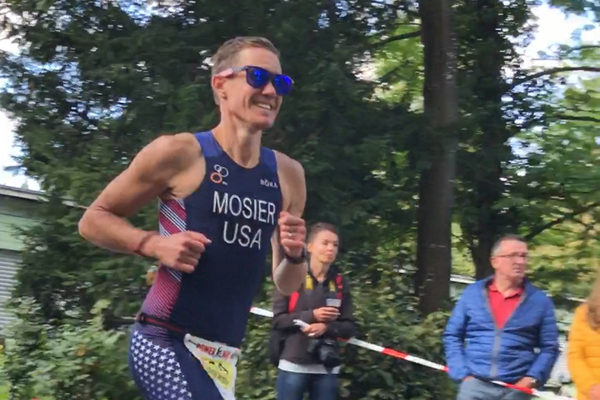
(Photo by Zhen Heinemann; courtesy Mosier)
And while some argue that anyone who’s been through a male puberty will on average retain a physical advantage — testosterone doesn’t vastly impact one’s height or reach — Fisher says even that argument is suspect.
“It’s like having a Mustang with a small engine,” Fisher says. “You still have this big car but it just doesn’t have the engine. We lost a lot of muscle mass, probably more than a fit female, but also a lot more bone mass. The muscle-to-mass ratio is lower,” she says. “I don’t really know if trans women have any advantage. I think it’s questionable.”
As one would expect, there’s huge support for trans athletes — both men and women — among LGBT advocacy groups. But the story changes significantly when you loop other stakeholders into the discussion.
Fallon Fox was the first openly trans athlete in MMA history in a 2012-2014 career that included just a single loss. She encountered substantial transphobia in her groundbreaking career but also questions about the fairness of her bouts. During a 2014 fight against Tamikka Brents, Brents suffered a concussion, orbital bone fracture and required seven staples to her head after the first round, which ended the fight. Brents, a lesbian, said after the fight it wasn’t a fair match.
Brents declined a Blade interview request saying she’d put the issue behind her but said at the time that Fox was far stronger than any other women she’d ever fought in a long MMA career.
Fox dismissed the advantage claim in a guest editorial on an MMA news website saying, “I’m a transgender woman. I deserve equal treatment and respect to other types of women. I feel this is so ridiculously unnecessary and horribly mean spirited.”
Elusive consensus
While it’s understandable that consensus eludes the sports world among the Alliance Defending Freedom, Fox News and the like, it’s still thorny because there’s no consensus either among trans people.
Some believe trans athletes should be able to compete without any medical intervention at all, others believe in a physical barometer to gauge trans eligibility while others say there should be a separate league for trans athletes, not a widely held view because of their small numbers. They mostly agree, however, that participation is essential.
Ennis of OutSports says the fact that trans women haven’t emerged as a dominant force in elite sports and even in high school sports don’t win constantly helps support the general push toward trans inclusion.
“If a study were to come out and say conclusively that trans women are physically unbeatable by cisgender women and every cis woman lost every time, I would throw in my hat and say, ‘That’s it, we can’t do it.’ But the facts aren’t in. Cis women do beat trans women. Not every single time, but there’s not one sport in which trans women totally dominate. These two (Connecticut) high school girls are winning competitions, but they don’t win every single one they’re in.”
“No trans person is trying to participate for personal gain,” McFarland says. “They just want to do it in a healthy manner. This idea that people are transitioning just to dominate is something that critics continually get wrong and this ungrounded fear of trans people, that they’ll come in and take over, that’s really the dictionary definition of transphobia. … The current science and data reveals it’s a nonsense argument.”
a&e features
Eastern Shore chef named James Beard Finalist
Harley Peet creates inventive food in an inclusive space
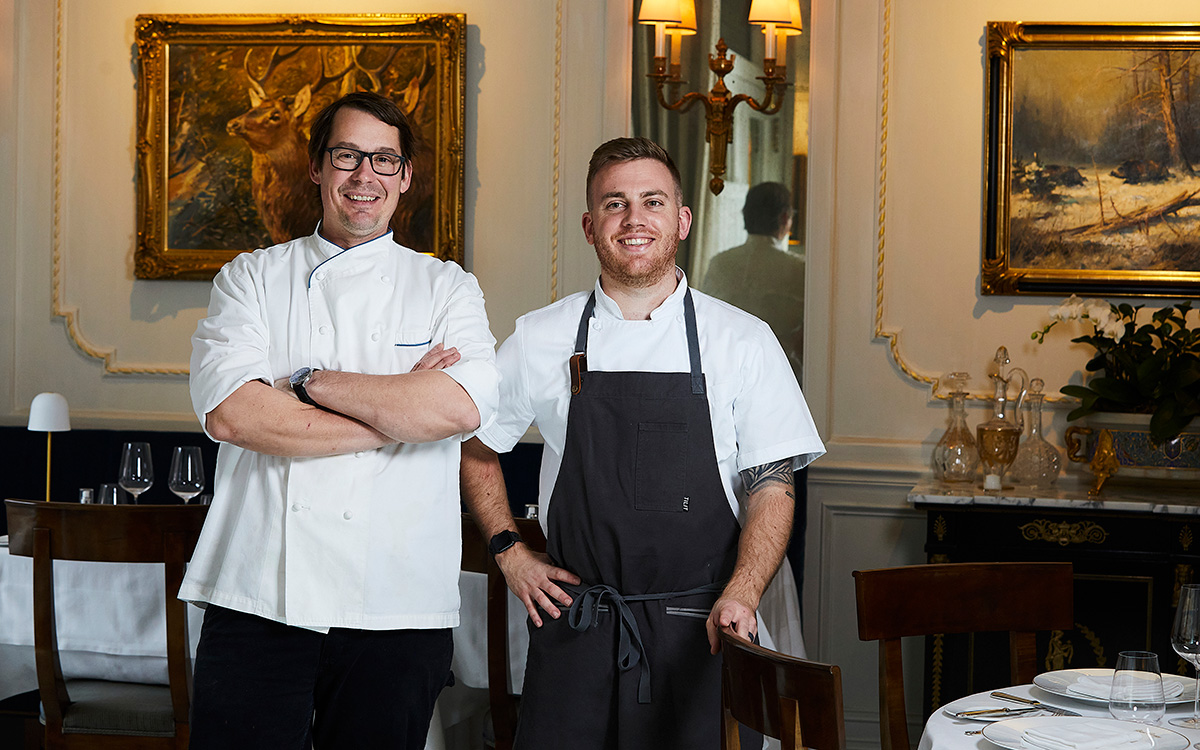
In a small Eastern Shore town filled with boutiques, galleries, and the occasional cry of waterfowl from the Chesapeake, Chef Harley Peet is most at home. In his Viennese-inflected, Maryland-sourced fine-dining destination Bas Rouge, Peet draws from his Northern Michigan upbringing, Culinary Institute of America education, and identity as a gay man, for inspiration.
And recently, Peet was named a James Beard Finalist for Best Chef: Mid-Atlantic – the first “Best Chef: Mid-Atlantic” finalist representing the Eastern Shore.
Peet, after graduation from the Culinary Institute of America, took a position as sous chef at Tilghman Island Inn, not far from Bas Rouge. Falling in love with the Eastern Shore, he continued his passion for racing sailboats, boating, gardening, and fishing, and living his somewhat pastoral life as he opened Bas Rouge in 2016 as head chef, a restaurant part of the Bluepoint Hospitality group, which runs more than a dozen concepts in and around Easton, Md.
Coming from a rural area and being gay, Peet knew he had his work cut out for him. He was always aware that the service and hospitality industry “can be down and dirty and rough.”
Now as a leader in the kitchen, he aims to “set a good example, and treat people how I want to be treated. I also want to make sure if you’re at our establishment, I’m the first to stand up and say something.”
The Bas Rouge cuisine, he says, is Contemporary European. “I’m inspired by old-world techniques of countries like Austria, Germany, and France, but I love putting a new spin on classic dishes and finding innovative ways to incorporate the bounty of local Chesapeake ingredients.”
His proudest dish: the humble-yet-elevated Wiener Schnitzel. “It is authentic to what one would expect to find in Vienna, down to the Lingonberries.” From his in-house bakery, Peet dries and grinds the housemade Kaiser-Semmel bread to use as the breadcrumbs.
Peet works to support the LGBTQ community inside and outside of the kitchen. “I love that our Bluepoint Hospitality team has created welcoming spaces where our patrons feel comfortable dining at each of our establishments. Our staff have a genuine respect for one another and work together free of judgment.”
Representing Bluepoint, Peet has participated in events like Chefs for Equality with the Human Rights Campaign, advocating for LGBTQ rights.
At Bas Rouge, Peet brings together his passion for inclusion steeped in a sustainability ethic. He sees environmental stewardship as a way of life. Peet and his husband have lived and worked on their own organic farm for several years. Through research in Europe, he learned about international marine sourcing. Witnessing the impacts of overfishing, Peet considers his own role in promoting eco-friendly practices at Bas Rouge. To that end, he ensures responsible sourcing commitments through his purveyors, relationships that have helped create significant change in how people dine in Easton.
“I have built great relationships in the community and there’s nothing better than one of our long-standing purveyors stopping in with a cooler of fresh fish from the Chesapeake Bay. This goes especially for catching and plating the invasive blue catfish species, which helps control the species’ threat to the local ecosystem.
Through his kitchen exploits, Peet expressed a unique connection to another gay icon in a rural fine-dining restaurant: Patrick O’Connell, of three Michelin starred Inn at Little Washington. In fact, Peet’s husband helped design some of O’Connell’s kitchen spaces. They’ve both been able to navigate treacherous restaurant-industry waters, and have come out triumphant and celebrated. Of O’Connell, Peet says that he “sees [his restaurants] as canvas, all artistry, he sees this as every night is a show.” But at the same time, his “judgment-free space makes him a role model.”
Being in Easton itself is not without challenges. Sourcing is a challenge, having to either fly or ship in ingredients, whereas urban restaurants have the benefit of trucking, he says. The small town “is romantic and charming,” but logistics are difficult – one of the reasons that Peet ensures his team is diverse, building in different viewpoints, and also “making things a hell of a lot more fun.”
Reflecting on challenges and finding (and creating) space on the Eastern Shore, Peet confirmed how important it was to surround himself with people who set a good example, and “if you don’t like the way something is going … move on.”
a&e features
What to expect at the 2024 National Cannabis Festival
Wu-Tang Clan to perform; policy discussions also planned
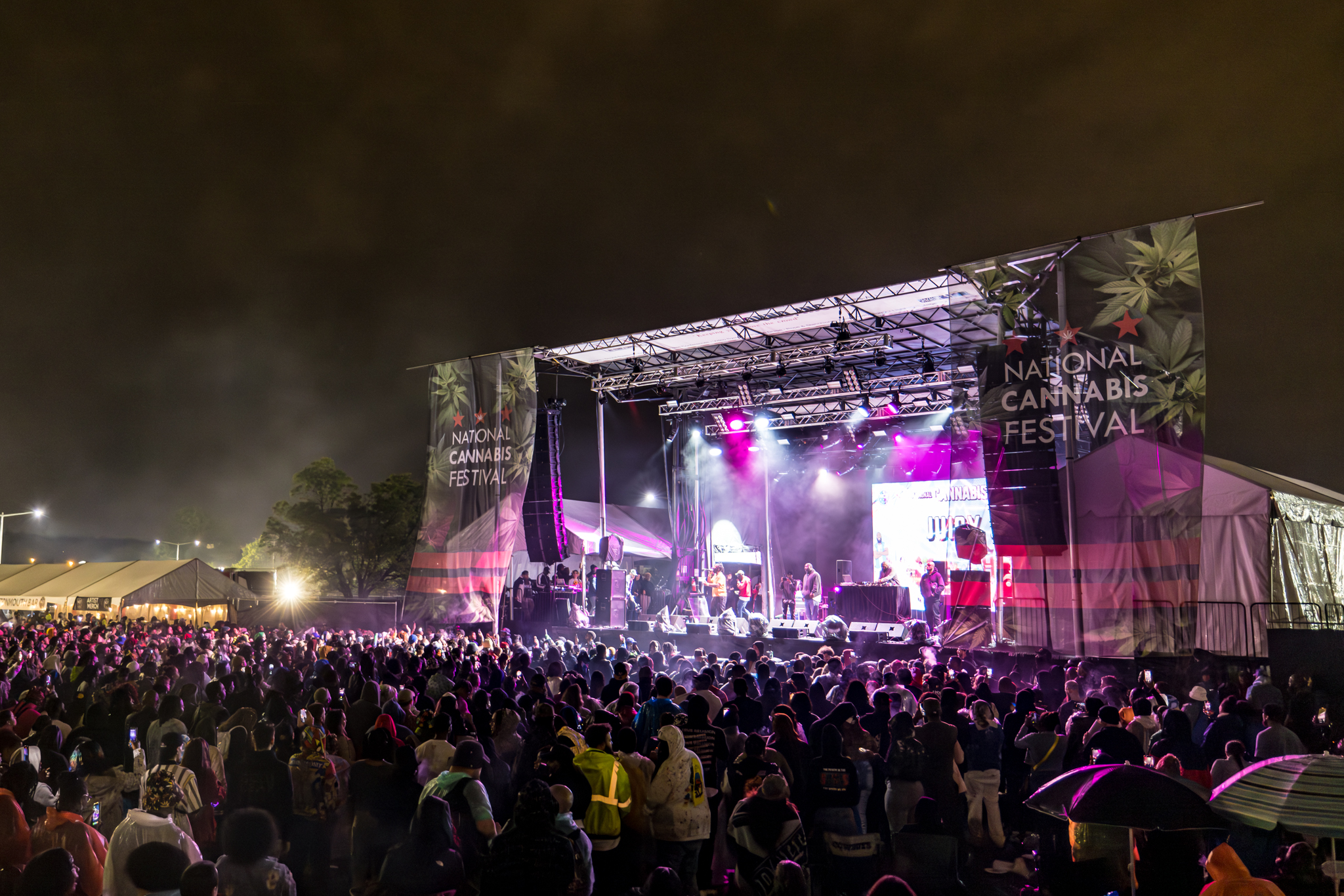
(Editor’s note: Tickets are still available for the National Cannabis Festival, with prices starting at $55 for one-day general admission on Friday through $190 for a two-day pass with early-entry access. The Washington Blade, one of the event’s sponsors, will host a LGBTQIA+ Lounge and moderate a panel discussion on Saturday with the Mayor’s Office of LGBTQ Affairs.)
With two full days of events and programs along with performances by Wu-Tang Clan, Redman, and Thundercat, the 2024 National Cannabis Festival will be bigger than ever this year.
Leading up to the festivities on Friday and Saturday at Washington, D.C.’s RFK Stadium are plenty of can’t-miss experiences planned for 420 Week, including the National Cannabis Policy Summit and an LGBTQ happy hour hosted by the District’s Black-owned queer bar, Thurst Lounge (both happening on Wednesday).
On Tuesday, the Blade caught up with NCF Founder and Executive Producer Caroline Phillips, principal at The High Street PR & Events, for a discussion about the event’s history and the pivotal political moment for cannabis legalization and drug policy reform both locally and nationally. Phillips also shared her thoughts about the role of LGBTQ activists in these movements and the through-line connecting issues of freedom and bodily autonomy.
After D.C. residents voted to approve Initiative 71 in the fall of 2014, she said, adults were permitted to share cannabis and grow the plant at home, while possession was decriminalized with the hope and expectation that fewer people would be incarcerated.
“When that happened, there was also an influx of really high-priced conferences that promised to connect people to big business opportunities so they could make millions in what they were calling the ‘green rush,'” Phillips said.
“At the time, I was working for Human Rights First,” a nonprofit that was, and is, engaged in “a lot of issues to do with world refugees and immigration in the United States” — so, “it was really interesting to me to see the overlap between drug policy reform and some of these other issues that I was working on,” Phillips said.
“And then it rubbed me a little bit the wrong way to hear about the ‘green rush’ before we’d heard about criminal justice reform around cannabis and before we’d heard about people being let out of jail for cannabis offenses.”
“As my interests grew, I realized that there was really a need for this conversation to happen in a larger way that allowed the larger community, the broader community, to learn about not just cannabis legalization, but to understand how it connects to our criminal justice system, to understand how it can really stimulate and benefit our economy, and to understand how it can become a wellness tool for so many people,” Phillips said.
“On top of all of that, as a minority in the cannabis space, it was important to me that this event and my work in the cannabis industry really amplified how we could create space for Black and Brown people to be stakeholders in this economy in a meaningful way.”
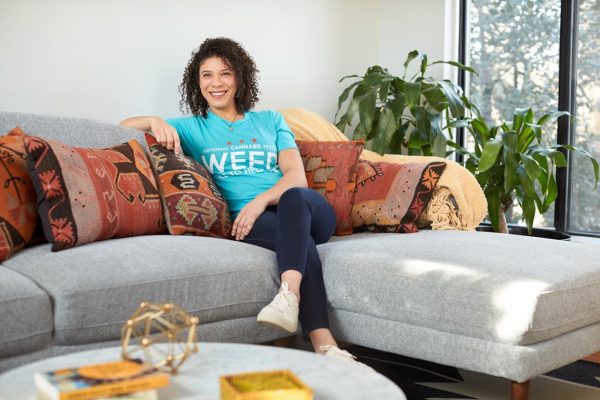
“Since I was already working in event production, I decided to use those skills and apply them to creating a cannabis event,” she said. “And in order to create an event that I thought could really give back to our community with ticket prices low enough for people to actually be able to attend, I thought a large-scale event would be good — and thus was born the cannabis festival.”
D.C. to see more regulated cannabis businesses ‘very soon’
Phillips said she believes decriminalization in D.C. has decreased the number of cannabis-related arrests in the city, but she noted arrests have, nevertheless, continued to disproportionately impact Black and Brown people.
“We’re at a really interesting crossroads for our city and for our cannabis community,” she said. In the eight years since Initiative 71 was passed, “We’ve had our licensed regulated cannabis dispensaries and cultivators who’ve been existing in a very red tape-heavy environment, a very tax heavy environment, and then we have the unregulated cannabis cultivators and cannabis dispensaries in the city” who operate via a “loophole” in the law “that allows the sharing of cannabis between adults who are over the age of 21.”
Many of the purveyors in the latter group, Phillips said, “are looking at trying to get into the legal space; so they’re trying to become regulated businesses in Washington, D.C.”
She noted the city will be “releasing 30 or so licenses in the next couple of weeks, and those stores should be coming online very soon” which will mean “you’ll be seeing a lot more of the regulated stores popping up in neighborhoods and hopefully a lot more opportunity for folks that are interested in leaving the unregulated space to be able to join the regulated marketplace.”
National push for de-scheduling cannabis
Signaling the political momentum for reforming cannabis and criminal justice laws, Wednesday’s Policy Summit will feature U.S. Sens. Raphael Warnock (D-Ga.), Jeff Merkley (D-Ore.), Elizabeth Warren (D-Mass.), and Chuck Schumer (D-N.Y.), the Senate majority leader.
Also representing Capitol Hill at the Summit will be U.S. Congresswoman Eleanor Holmes Norton (D-D.C.) and U.S. Reps. Earl Blumenauer (D-Ore.) and Barbara Lee (D-Calif.) — who will be receiving the Supernova Women Cannabis Champion Lifetime Achievement Award — along with an aide to U.S. Rep. David Joyce (R-Ohio).
Nationally, Phillips said much of the conversation around cannabis concerns de-scheduling. Even though 40 states and D.C. have legalized the drug for recreational and/or medical use, marijuana has been classified as a Schedule I substance since the Controlled Substances Act was passed in 1971, which means it carries the heftiest restrictions on, and penalties for, its possession, sale, distribution, and cultivation.
The U.S. Department of Health and Human Services formally requested the drug be reclassified as a Schedule III substance in August, which inaugurated an ongoing review, and in January a group of 12 Senate Democrats sent a letter to the Biden-Harris administration’s Drug Enforcement Administration urging the agency to de-schedule cannabis altogether.
Along with the Summit, Phillips noted that “a large contingent of advocates will be coming to Washington, D.C. this week to host a vigil at the White House and to be at the festival educating people” about these issues. She said NCF is working with the 420 Unity Coalition to push Congress and the Biden-Harris administration to “move straight to de-scheduling cannabis.”
“This would allow folks who have been locked up for cannabis offenses the chance to be released,” she said. “It would also allow medical patients greater access. It would also allow business owners the chance to exist without the specter of the federal government coming in and telling them what they’re doing is wrong and that they’re criminals.”
Phillips added, however, that de-scheduling cannabis will not “suddenly erase” the “generations and generations of systemic racism” in America’s financial institutions, business marketplace, and criminal justice system, nor the consequences that has wrought on Black and Brown communities.
An example of the work that remains, she said, is making sure “that all people are treated fairly by financial institutions so that they can get the funding for their businesses” to, hopefully, create not just another industry, but “really a better industry” that from the outset is focused on “equity” and “access.”
Policy wonks should be sure to visit the festival, too. “We have a really terrific lineup in our policy pavilion,” Phillips said. “A lot of our heavy hitters from our advocacy committee will be presenting programming.”
“On Saturday there is a really strong federal marijuana reform panel that is being led by Maritza Perez Medina from the Drug Policy Alliance,” she said. “So that’s going to be a terrific discussion” that will also feature “representation from the Veterans Cannabis Coalition.”
“We also have a really interesting talk being led by the Law Enforcement Action Partnership about conservatives, cops, and cannabis,” Phillips added.
Cannabis and the LGBTQ community
“I think what’s so interesting about LGBTQIA+ culture and the cannabis community are the parallels that we’ve seen in the movements towards legalization,” Phillips said.
The fight for LGBTQ rights over the years has often involved centering personal stories and personal experiences, she said. “And that really, I think, began to resonate, the more that we talked about it openly in society; the more it was something that we started to see on television; the more it became a topic in youth development and making sure that we’re raising healthy children.”
Likewise, Phillips said, “we’ve seen cannabis become more of a conversation in mainstream culture. We’ve heard the stories of people who’ve had veterans in their families that have used cannabis instead of pharmaceuticals, the friends or family members who’ve had cancer that have turned to CBD or THC so they could sleep, so they could eat so they could get some level of relief.”
Stories about cannabis have also included accounts of folks who were “arrested when they were young” or “the family member who’s still locked up,” she said, just as stories about LGBTQ people have often involved unjust and unnecessary suffering.
Not only are there similarities in the socio-political struggles, Phillips said, but LGBTQ people have played a central role pushing for cannabis legalization and, in fact, in ushering in the movement by “advocating for HIV patients in California to be able to access cannabis’s medicine.”
As a result of the queer community’s involvement, she said, “the foundation of cannabis legalization is truly patient access and criminal justice reform.”
“LGBTQIA+ advocates and cannabis advocates have managed to rein in support of the majority of Americans for the issues that they find important,” Phillips said, even if, unfortunately, other movements for bodily autonomy like those concerning issues of reproductive justice “don’t see that same support.”
a&e features
Juliet Hawkins’s music defies conventional categorization
‘Keep an open mind, an open heart, and a willingness to evolve’
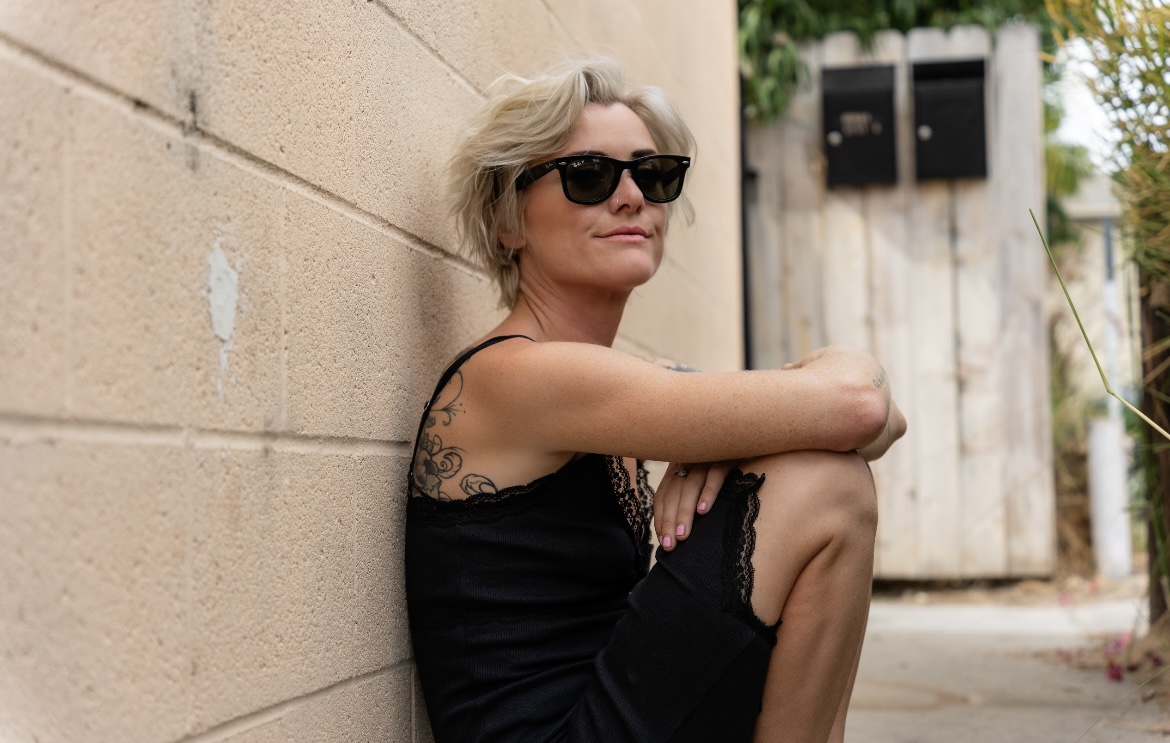
LONG BEACH, Calif. – Emerging from the dynamic music scene of Los Angeles, Juliet Hawkins seamlessly integrates deeply soulful vocals with contemporary production techniques, crafting a distinctive sound that defies conventional categorization.
Drawing inspiration from the emotive depth of Amy Winehouse and weaving together elements of country, blues, and pop, Hawkins’ music can best be described as a fusion–perhaps best termed as soulful electronica. Yet, even this characterization falls short, as Hawkins defines herself as “a blend of a million different inspirations.”
Hawkins’s musical palette mirrors her personae: versatile and eclectic. Any conversation with Hawkins makes this point abundantly clear. She exhibits the archetype of a wild, musical genius while remaining true to her nature-loving, creative spirit. Whether recording in the studio for an album release, performing live in a studio setting, or playing in front of a live audience, Hawkins delivers her music with natural grace.
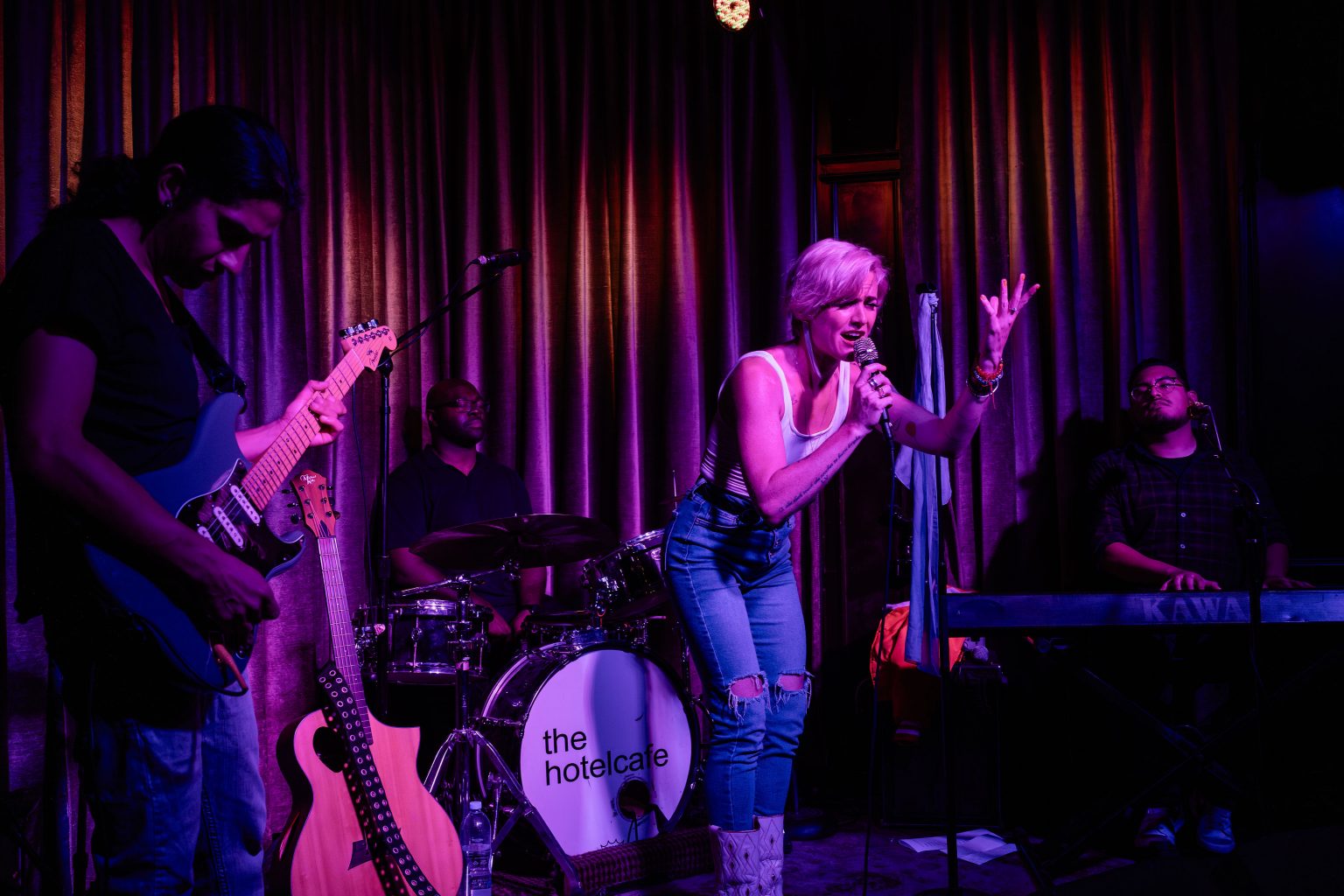
However, Hawkins’s musical journey is far from effortless. Amid personal challenges and adversity, she weaves her personal odyssey of pain and pleasure, transforming these experiences into empowering anthems.
In a candid interview with the Blade, Hawkins spoke with profound openness and vulnerability about her past struggles with opiate and heroin addiction: “That was 10 years ago that I struggled with opiates,” she shared. Yet, instead of letting her previous addiction define her, Hawkins expressed to the Blade that she harbors no shame about her past. “My newer music is much more about empowerment than recovery,” she explained, emphasizing that “writing was the best way to process trauma.”
Despite her struggles with addiction, Hawkins managed to recover. However, she emphasizes that this recovery is deeply intertwined with her spiritual connection to nature. An illustrative instance of Hawkins’ engagement with nature occurred during the COVID pandemic.
Following an impulse that many of us have entertained, she bought a van and chose to live amidst the trees. It was during this period that Hawkins composed the music for her second EP, titled “Lead with Love.”
In many ways, Hawkins deep spiritual connection to nature has been profoundly shaped by her extensive travels. Born in San Diego, spending her formative years in Massachusetts, and later moving to Tennessee before returning to Southern California, she has broadened her interests and exposed herself to the diverse musical landscapes across America.
“Music is the only thing I have left,” Hawkins confides to the Blade, highlighting the integral role that music has in her life. This intimate relationship with music is evident in her sultry and dynamic compositions. Rather than imitating or copying other artists, Hawkins effortlessly integrates sounds from some of her favorite musical influences to create something new. Some of these influences include LP, Lucinda Williams, Lana Del Rey, and, of course, Amy Winehouse, among others.

Hawkins has always been passionate about music—-she began with piano at a young age, progressed to guitar, and then to bass, eagerly exploring any instrument she could get her hands on. However, instead of following a traditional path of formalized lessons and structured music theory, Hawkins told the Blade that she “has a hard time following directions and being told what to do.”
This independent approach has led her to experiment with various genres and even join unexpected groups, such as a tribute band for Eric Clapton and Cream. While she acknowledges that her eclectic musical interests might be attributed to ADHD, she holds a different belief: “Creative minds like to move around.”
When discussing her latest musical release — “Stay True (the live album)” which was recorded in a live studio setting — Hawkins describes the experience as a form of improvisation with both herself and the band:
“[The experience] was this divine honey that was flowing through all of us.” She explains that this live album was uncertain in the music’s direction. “For a couple of songs,” Hawkins recalls, “we intuitively closed them out.” By embracing creative spontaneity and refusing to be constrained by fear of mistakes, the live album authentically captures raw sound, complete with background chatter, extended outros, and an extremely somber cover of Ozzy Osbourne’s “Crazy Train” coupled with a slow piano and accompanied strings.
While “Stay True” was a rewarding experience for Hawkins, her favorite live performance took place in an unexpected location—an unattended piano in the middle of an airport. As she began playing Beethoven’s “Moonlight Sonata”, Hawkins shared with the Blade a universal connection we all share with music: “This little girl was dancing as I was playing.”
After the performance, tears welled in Hawkins’ eyes as she was touched by the young girl’s appreciation of her musicianship. Hawkins tells the Blade, “It’s not about playing to an audience—it’s about finding your people.”
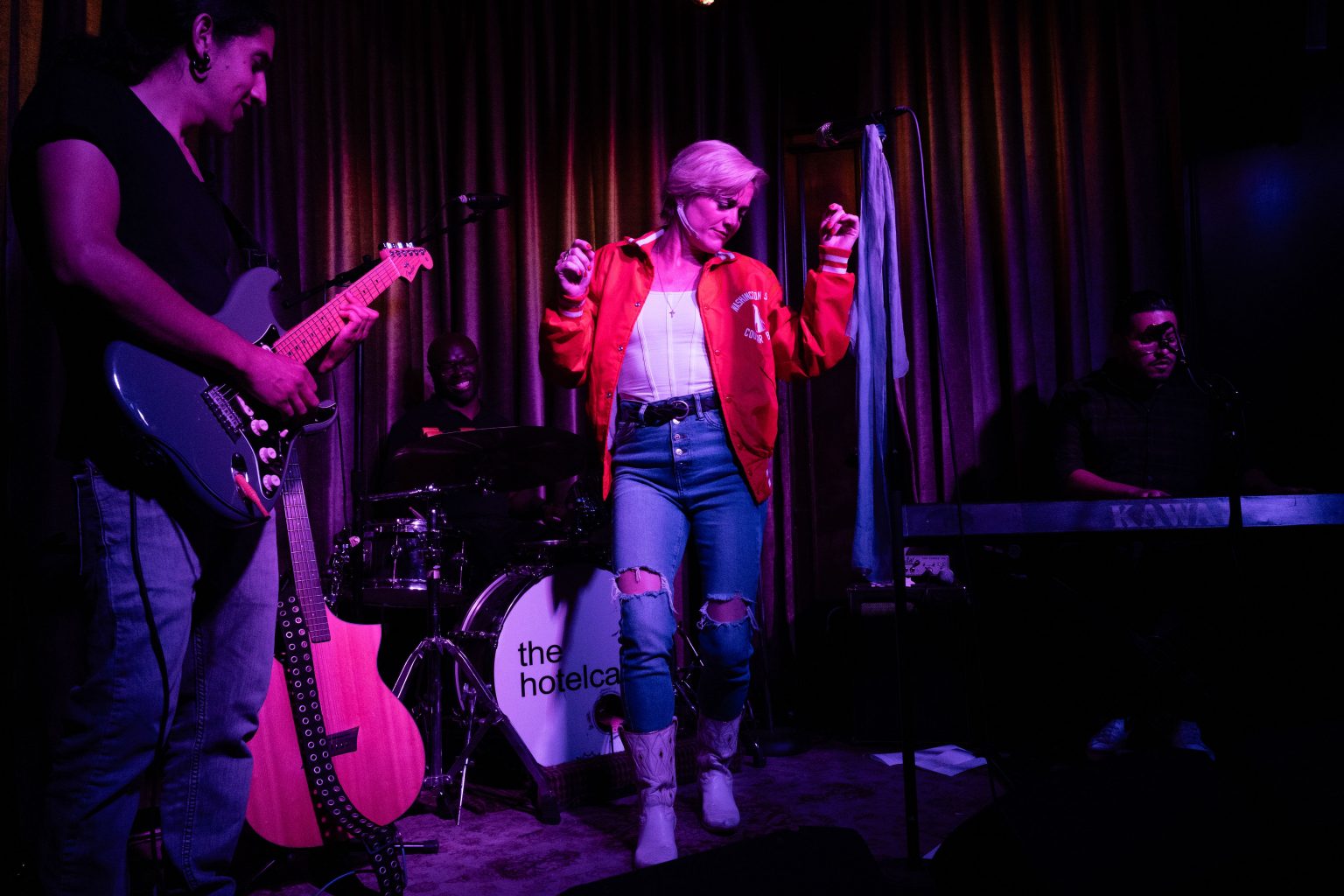
What sets Hawkins apart as an artist is her ability to connect with her audience in diverse settings. She highlights EDC, an electronic dance music festival, as a place where she unabashedly lets her “freak flag” fly and a place to connect with her people. Her affinity for electronic music not only fuels her original pop music creations, but also inspires her to reinterpret songs with an electronic twist. A prime example of this is with her electronic-style cover of Tal Bachman’s 90’s hit, “She’s So High.”
As an openly queer woman in the music industry, Hawkins is on a mission to safeguard artistic integrity. In songs like “My Father’s Men,” she bares her vulnerability and highlights the industry’s misogyny, which often marginalizes gender minorities in their pursuit of artistic expression.
She confides to the Blade, “The industry can be so sexist, misogynist, and oppressive,” and points out that “there are predators in the industry.” Yet, rather than succumbing to apathy, Hawkins is committed to advocating for gender minorities within the music industry.
“Luckily, people are rising up against misogyny, but it’s still there. ‘My Father’s Men’ is a message: It’s time for more people who aren’t just white straight men to have a say.”
Hawkins is also an activist for other causes, with a fervent belief in the preservation of bodily autonomy. Her self-directed music video “I’ll play Daddy,” showcases the joy of embracing one’s body with Hawkins being sensually touched by a plethora of hands. While the song, according to Hawkins, “fell upon deaf ears in the south,” it hasn’t stopped Hawkins from continuing to fight for the causes she believes in. In her interview, Hawkins encapsulated her political stance by quoting an artist she admires:
“To quote Pink, ‘I don’t care about your politics, I care about your kids.’”
When Hawkins isn’t writing music or being a champion for various causes, you might catch her doing the following: camping, rollerblading, painting, teaching music lessons, relaxing with Bernie (her beloved dog), stripping down for artsy photoshoots, or embarking on a quest to find the world’s best hollandaise sauce.
But at the end of the day, Hawkins sums up her main purpose: “To come together with like-minded people and create.”
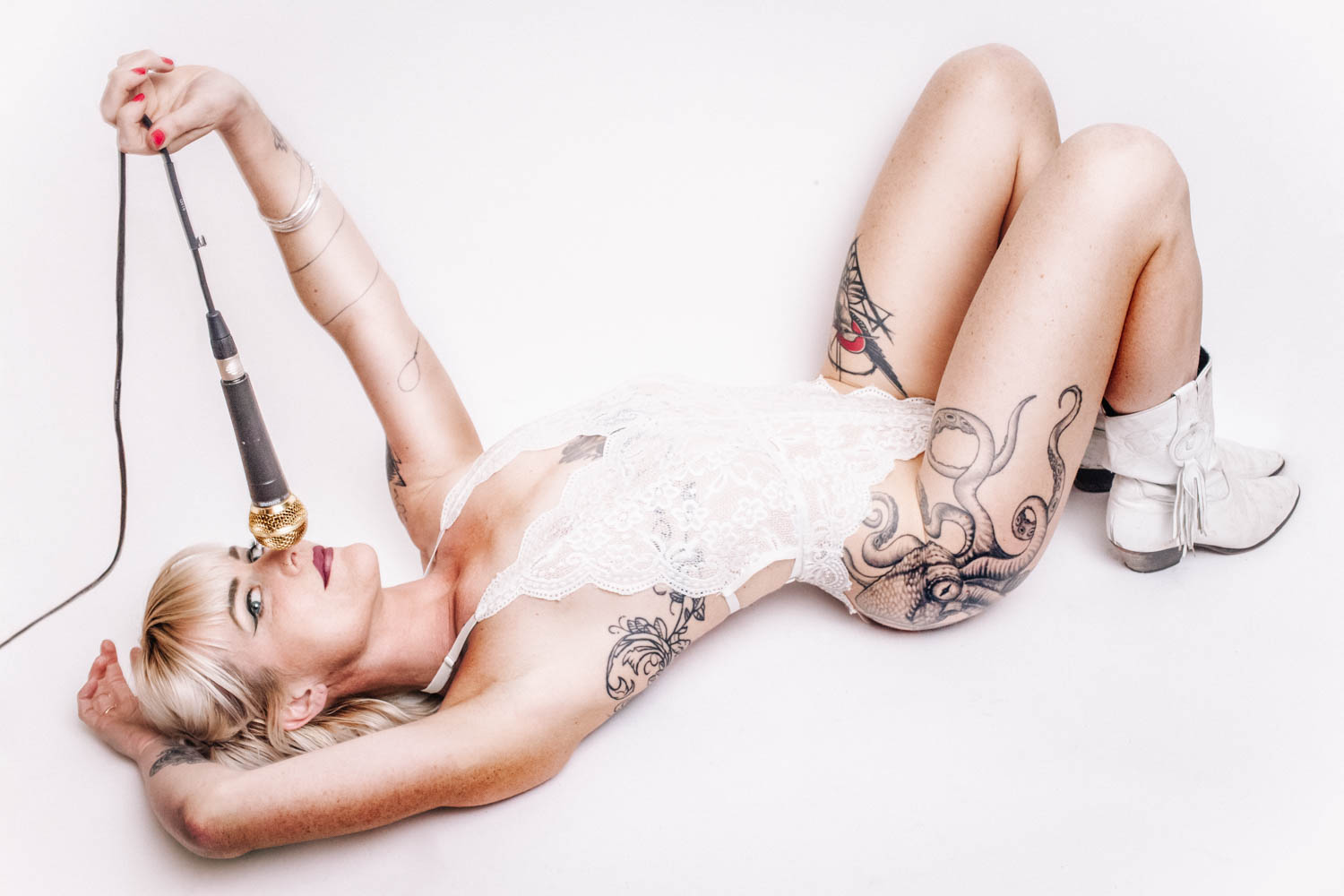
Part of this ever-evolving, coming-of-age-like journey includes an important element: plant-based medicine. Hawkins tells the Blade that she acknowledges her previous experience with addiction and finds certain plants to be useful in her recovery:
“The recovery thing is tricky,” Hawkins explains, “I don’t use opiates—-no powders and no pills—but I am a fan of weed, and I think psilocybin can be helpful when used at the right time.” She emphasizes the role of psychedelics in guiding her towards her purpose. “Thanks for psychedelics, I have a reignited sense of purpose … Music came naturally to me as an outlet to heal.”
While she views the occasional dabbling of psychedelics as a spiritual practice, Hawkins also embraces other rituals, particularly those she performs before and during live shows. “I always carry two rocks with me: a labradorite and a tiger’s eye marble,” she explains.
-

 State Department4 days ago
State Department4 days agoState Department releases annual human rights report
-

 South America2 days ago
South America2 days agoArgentina government dismisses transgender public sector employees
-

 District of Columbia2 days ago
District of Columbia2 days agoCatching up with the asexuals and aromantics of D.C.
-

 Politics5 days ago
Politics5 days agoSmithsonian staff concerned about future of LGBTQ programming amid GOP scrutiny



